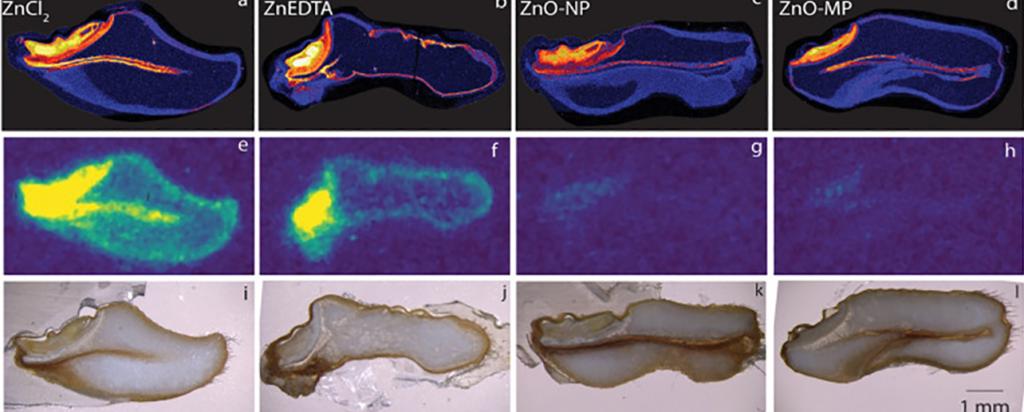
Using the ‘tracer principle’, a variety of organisms, systems and equilibriums can be investigated, in a quantitative manner, with minimal disturbance to endogenous processes.
Radioisotopes, radiolabelled molecules and radioactive particles are used in conjunction with a range of quantitative imaging, spectroscopy and radiation counting based methods to provide either kinetic or endpoint information on biological processes of interest. We maintain equipment and a knowledge base that allows the preparation of biological samples for analysis by a variety of higher energy analytical techniques including neutron activation analysis (NAA) at the OPAL reactor, x-ray fluorescence microscopy (XFM) at the Australian Synchrotron and particle-induced x-ray emission (μPIXE) at the Centre for Accelerator Science (CAS), and the integration of these techniques with traditional bio-analytics.
Biodistribution studies use radiotracers to track compounds of interest in plants or animals and help reveal discrete organ uptake, distribution, and excretion of the compound. This can also be combined with other ex vivo and in vitro techniques that require dissection such as autoradiography, histology, and metabolite studies. Biodistribution studies provide a static “snapshot” for quantifying organ-specific uptake of a radiotracer in an individual.
Techniques and technologies
- Biodistribution studies
- In vitro or ex vivo tracer kinetic studies
- Autoradiography of a range of alpha, beta and gamma emitting isotopes using phosphor plates and film
- Histology and immunostaining study to determine the localisation of the receptors, antigens and/or biomarkers in cells and tissues
Capability Selections
- In vitro or ex vivo tracer kinetics study
- Biodistribution study
- Autoradiography study
- Histology and immunostaining study
